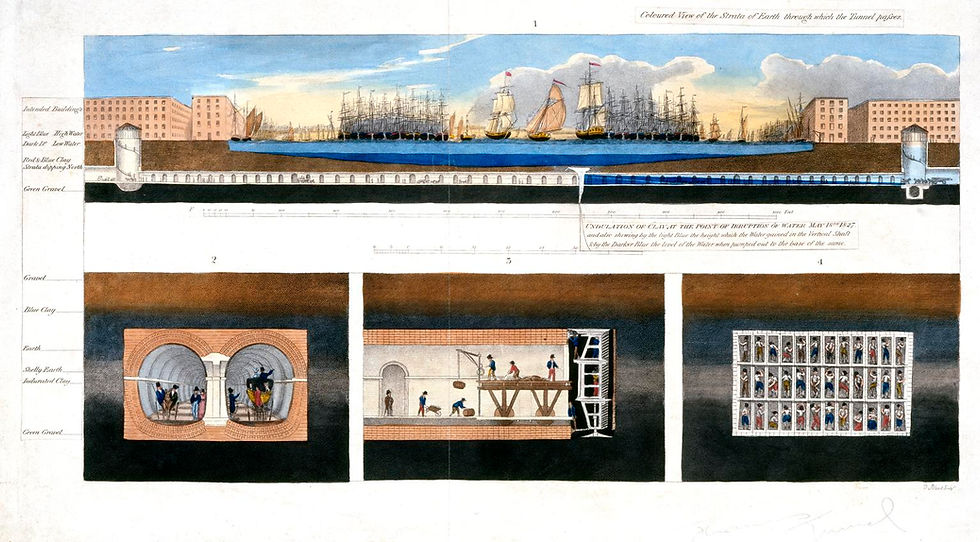THIS MONTH IN ENGINEERING | August 1844 — The Thames Tunnel Opens to Pedestrians
- Rebeka Zubac

- Aug 11
- 1 min read
Updated: Sep 4
In August 1844, Londoners stepped into the unknown, walking 23 metres beneath the River Thames through the first tunnel ever built under a major waterway. Designed by Marc Isambard Brunel and built in unstable clay, gravel, and silt, the Thames Tunnel introduced the world to the tunnelling shield — and to the risks of working below the river in darkness, stale air, and shifting ground.
The project drove early innovations in ventilation shafts, gas management, waterproofing, and pumping systems, all vital to keeping workers alive and the works dry. These principles are still applied today in underground stations, basements, and service tunnels: moving fresh air through enclosed spaces, separating people from fire or smoke, and preventing water ingress where it threatens safety or operation.
At Goldfish & Bay, our work continues this legacy in a different context. Whether designing plantrooms with flood barriers, integrating smoke control into underground car parks, or engineering ventilation paths through high-rise cores, the fundamentals remain the same: controlling air, water, and safety in spaces you can’t see from the street.
The Thames Tunnel remains in use today as part of the London Overground, proof that when these fundamentals are done right, they last.
Sources:
The Brunel Museum | The Geological Society | The Engineer archive | Institution of Civil Engineers | Tunnelling Journal
#ThisMonthInEngineering #GoldfishAndBay #EngineeringHistory #BuildingServices #VentilationDesign h#FireSafetyEngineering #HydraulicEngineering `#MechanicalDesign hashtag#EngineeringLegacy#Infrastructure


















